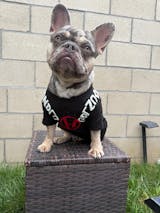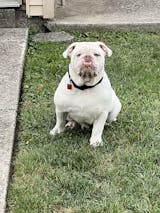How To Keep Your Dogs Fur Clean From Tear Staining
Wondering how to keep your dogs fur clean from tear stains? Dog owners adore their four-legged best friends. They learn about the dog’s personality, quirks, sources of happiness, and begin to pick up quickly on any signs of discomfort. Dogs are also always itching, scratching, and licking various body parts. However, keen dog owners recognize that at times, these behaviors can be excessive and are likely a sign of something more bothersome. At other times, dog owners may notice something visually about their animals that prompts concern, such as reddish staining under the dog’s eyes.

What Causes Tear Staining On The Dog’s Coat?
Sometimes dog owners notice discoloration on the fur under their dog’s eyes, prompting a cause for concern of the dog’s health. Luckily, in the great majority of situations, this staining is just discoloration caused by excessive tears landing on those parts of the dog’s face. And don’t worry, this doesn’t mean your little buddy is sad and you are not a bad owner. There are natural reasons why this problem occurs.
Some dogs experience chronic tearing, causing the fur on their faces to experience said discoloration due to a group of organic compounds that formulate a chemical known as porphyrin. A dog’s tears and saliva are naturally rich in porphyrin.
Many breeds have small and crooked tear ducts, due to protruding eyes and short noses. Much like humans whose bodies use tears to flush out unwanted irritants (like dust) from their eyes, dogs produce tears for similar reasons. The difference in some breeds is instead of draining away from the face and down a dog’s throat, the tears come out on their fur. The more this happens, the more porphyrin is released and the fur begins to assume a pinkish hue.
Dogs also use their tongues to take care of many grooming needs. The tongue can travel anywhere on the dog’s body that it can physically reach, so it often touches the area under the eyes. A dog licks its paws and other body parts which could have porphyrins on them as well from urine. While the dog’s tongue is typically regarded as being clean, it does pick up the porphyrins that come from the urine, and coupled with the porphyrin presence in saliva. When the dog scratches its face or licks it, additional porphyrin adds to the staining effect.
The tear staining can happen to most dogs but is more prominently noticed on those with lighter furs. This also is more common on dogs with longer fur. Keeping your furry dog’s coat clean of staining can prove to be tough, but with regular maintenance and care, it can certainly be accomplished.
Is Tear Staining Serious?
If the reason for the excessive porphyrin on the dog’s fur is due to excessive licking, the dog may have something else around its eyes that makes it uncomfortable. Dogs who are licking and scratching their faces, paws, and genitals frequently might be afflicted with allergies. Excessive salivating can be a sign of dental issues or gum problems in the dog.
On top of that, certain breeds are more susceptible to problems with their eyes. These problems can range from the breed naturally having shallow eye sockets with poor tear ducts (affecting breeds like Pugs, Shih-Tzus, and Maltese), to inward-turned eyelids causing the tear drainage ducts to become blocked. Even hair and fur around the eye can push tears away from the dog’s eye, and onto its face.
If the dog is showing excessive amounts of porphyrin deposits through tear staining, a trip to the vet would be worthwhile to rule out any such conditions. However, the staining on its own is not harmful. What it is, however, is very challenging to remove.
Combatting Tear Staining
When it comes to tear staining, the best defense is a good offense. Regularly keeping your dog’s face clean and wiping off the debris and eye boogers will help stave off any long term onset porphyrin deposits, keeping your dog’s face clear of staining.
If your dog is already beginning to experience staining, removing it can be troublesome. Products such as Squishface Wrinkle Paste, for example, can be of great help in protecting your dog’s wrinkles, where moisture can get trapped and cause tear staining. You can apply the Wrinkle Paste liberally to the affected area (approximately the size of a pea for every stain, fully rubbed in) on the afflicted area, then wipe away the excess with the Squishface Wrinkle Wipes.
It is important to make sure that the paste is applied to the dog’s skin, not just on the fur layer. Give it 24 hours after the application and repeat the cleaning process once daily for about a week. There is no harm in applying this for more than 7 or 8 days, but it is after that period that you should start noticing a difference in the fur’s discoloration.
The Squishface Wrinkle Paste forms a water repellent barrier. This barrier is additionally helpful as it has antibiotic and anti-fungal properties, so its topical application helps to stave off moisture, bacteria, and any fungus that is conducive to growing in perpetually moist areas. The ingredients in Squishface Wrinkle Paste are minimal, so there is a much smaller chance of an allergic reaction by even the most sensitive pet. This ointment acts quickly and works great on all dogs, including long-haired breeds like Pomeranians, Poodles, and Shih-Tzus.
Your dog may not be discomforted by the red staining, but we rarely know how dogs actually feel. It may be noticeable and could become enough of a bother that the dog licks and scratches at his face, making the otherwise benign problem worse by exposing more porphyrin deposits and bacteria to it. Without a doubt, bother or not, your pup would appreciate some fast-acting relief.
For more great info about dog tear stains check out our blog post about why dogs have tear stains and how to address them!










